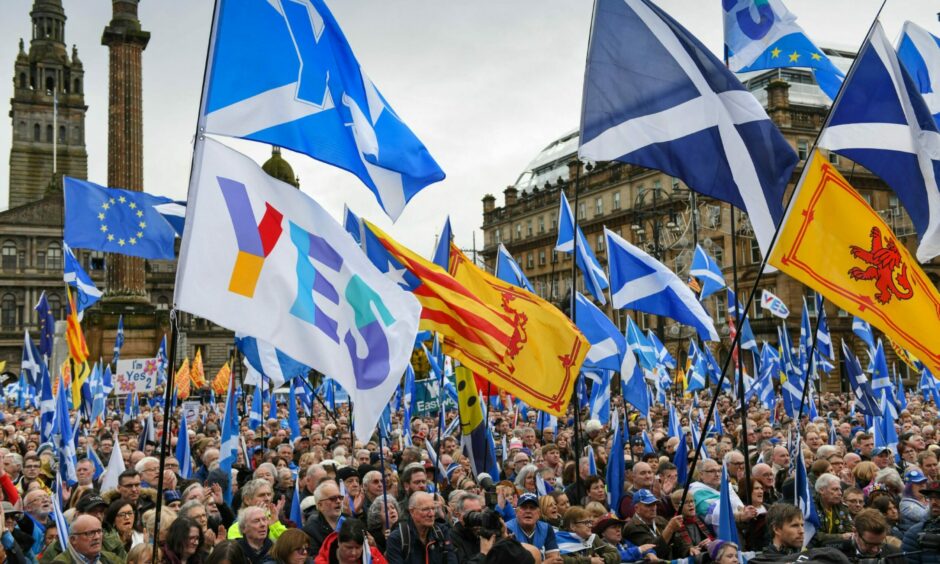Opinion polls occasionally throw up quirks worth pondering, such as one that is currently evident in Scottish polling.
That’s to say, support for independence has been consistently ahead of backing for the SNP in a number of recent polls.
So what, some might say; after all, it’s not the first time this has been seen.
But the significance of this is probably greater than many might realise.
For much of the time before the SNP first took office in 2007 support for independence routinely outstripped support for the party.
Backing for both would wax and wane but it was almost a nailed-on certainty in those days, before the SNP became the dominant force in the land, that backing for independence would score higher in the polls than support for the party.
That’s not to say independence scored highly in those days – it often did anything but.
SNP opponents foolish to assume long-term decline
Two main points emerge from this. Firstly, whatever bump the SNP may have taken recently in the polls, their opponents would be foolish in the extreme to assume this signals long-term decline or a realignment which pushes the SNP off its perch at the summit of Scottish politics.
As I’ve observed here recently, Scottish Labour may or may not make gains at the next UK general election – but given they are starting from a base of just one seat out of 59 in the country it would hardly count as a major achievement to better that tally.
And almost everything when it comes to the next Westminster election needs to be seen in the context of what could bluntly be labelled as an “anyone but the Tories” contest.
That holds true not just here in Scotland. In England, there’s much speculation that the Conservatives may well lose all three of this week’s by-elections sparked by the political demise of Boris Johnson as voters there also opt for anyone but the incumbents.
In such circumstances, no one should assume, once the dust settles from the next UK election, that the fundamentals of Scottish politics will have changed.
Support for independence will almost certainly still command roughly half of the Scottish population, and so the SNP will still have a massive, locked-in bedrock of likely support to draw on ahead of the next Holyrood contest.
The second, related, point is this – whatever the electoral fortunes of respective parties in the next couple of election cycles, at Holyrood and Westminster, as support for independence solidifies at around a 50 per cent baseline, it becomes harder and harder to see a party or coalition of parties being able to govern Scotland while opposing independence – or at the very least whilst remaining implacably opposed to allowing people a choice on the matter.
Some like to speculate that Labour might be able to command a majority at Holyrood, with the support of fellow unionist parties, while the SNP remained the largest party.
Scottish Labour teaming up with Tories would alienate voters
But forging such a pact with the Tories would likely alienate a significant portion of their own supporters and members, so hardly provides the basis for stable or prolonged government. It would also likely anger a section of the wider electorate for whom the idea of the winning party being locked out of office would be anathema.
Holyrood’s European-style electoral system may lend itself to Continental-type deals which say the biggest party doesn’t always get to be in government – but that doesn’t mean such backroom stitch-ups would wash for a Scottish population reared on the tradition of winner-takes-all elections.
More fundamentally, independence, once a fringe persuasion, is now firmly in the mainstream of political debate and belief. It’s sometimes asserted that the SNP’s time in office hasn’t moved the dial on independence. The reality is rather different.
True, support has not hugely increased since the 45% of the vote achieved in the 2014 referendum. But that masks the fact that the 2014 campaign itself massively galvanized core support for independence taking it to a previously unprecedented level and it has rarely, in the many polls since, dipped back to or below the result achieved in the referendum itself.
The average of the Yes vote over the long-term inches ever upwards – in fits and starts, up a little, down a little – but the incremental long-term trend appears upwards nevertheless, something borne out by the respected Scottish Social Attitudes Survey in recent years.
It remains to be seen whether the supposed demographic advantage enjoyed by the Yes side translates in the next few years to what could look like a permanent majority for independence, but the portents for supporters of the continued Westminster rule aren’t great.
And in the meantime, support for both independence and the SNP is likely to continue to buoy the other along.













